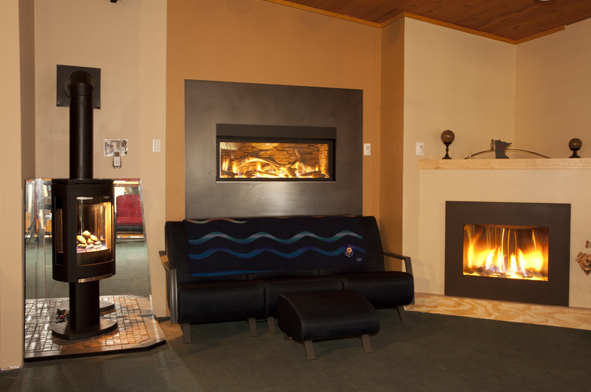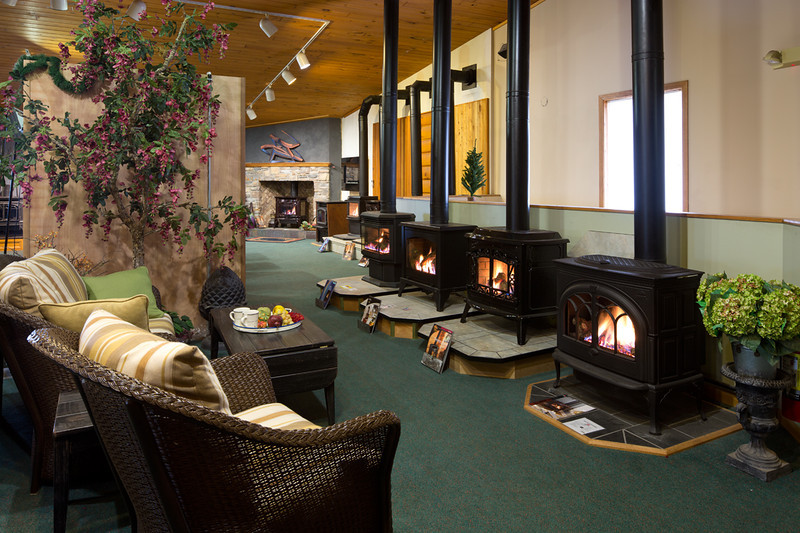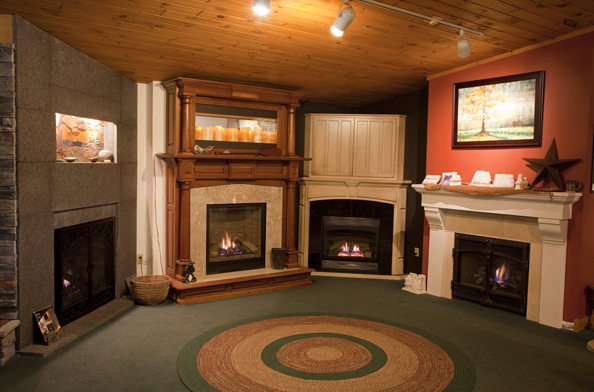Burning Tips
Burning Tips ~ By John Bergstrom
Wood is a unique source for renewable stored solar energy – one that is more complex and varied than other fuels. The energy in wood is present in both solid and gas form. Nearly half of the energy in firewood is in gas or smoke, and if the gases present in the wood aren't properly burned off, it can result in a loss of energy and either pollution or potentially dangerous creosote buildup in chimneys.
Newer, EPA approved wood stoves are known for burning clean and efficient. And, with a proper understanding of the operation of a wood stove, they can burn at peak efficiency, resulting in more heat, clean glass, less air pollution, and a cleaner chimney.
There are two types of combustion systems in clean-burning woodstoves – natural combustion and catalytic systems. Natural combustion stoves burn cleanly by their simple yet sophisticated design of primary and secondary air supply systems and combustion zones within the firebox. Catalytic designs have a replaceable catalytic combustor that lowers the ignition temperature of the wood gases, similar to an automobile’s catalytic converter.
Most stoves today have a fire control that controls primary air as well as providing a glass air wash. Air enters the firebox at the top, directly behind the glass, washes down the glass to the coal bed, and finally to the fire in the stove. When starting or rekindling fires, providing a passage for the air to move back into the new wood at the bottom front (close to the glass) of the stove makes for much more responsive fires.
The coal bed is what drives the whole clean-burning system, especially in natural combustion stoves. Establishing and maintaining a coal bed is necessary for clean fires and clean glass, especially with wet or oversized wood. Maintaining and managing the coal bed will result in the cleanest burn and the cleanest glass. In most stoves, the combustion system is designed to burn from front to back. As the fire burns down, raking the coals to the front from the back of the stove before refueling will create the most responsive fires. A rake or hoe-like tool is almost essential for managing the coal bed in front-loading stoves. It is not uncommon when refueling to have at least a 2" bed of coals raked right up behind the glass door and only dead ashes in the back two-thirds of the stove.
Ash accumulation in the firebox helps to maintain higher stove temperatures for cleaner burns and more consistent fires. The ash insulates and helps maintain a hotter bed of coals. Many stoves won't burn well until they have several fires worth of ash in the firebox. General advice for the best burns is to maintain a minimum of 3/4" of ash in the stove at all times.
Clean Glass ~
- Keep glass hot by keeping the coal
bed and fire near the front of the
stove.
- Crack the stove door slightly when starting
a fire.
- Open the air control after reloading until
the new wood gets hot.
- When refueling, place a quartered piece
of firewood behind the glass, one split
side down and one split side facing the
back of the glass.
- Clean small deposits off the glass while hot
with 000 steel wool with stove gloves.

Hotter Fires ~
- Rake coals forward and make sure there is a
passage for air to get into the wood load at the
front of the stove.
- Use smaller wood.
- Put wood in split side down (even birch).
- Arrange wood with ¾ – 1" air spaces between
pieces.

Longer Fires ~
- Use larger pieces and more dense species of firewood.
- Put wood in bark side down (even birch).
- Before refueling, rake the coals to cover one-third or less of the firebox floor.
- Let more ash accumulate before cleaning.

Clean Glass ~
- Keep glass hot by keeping the coal
bed and fire near the front of the
stove.
- Crack the stove door slightly when starting
a fire.
- Open the air control after reloading until
the new wood gets hot.
- When refueling, place a quartered piece
of firewood behind the glass, one split
side down and one split side facing the
back of glass.
- Clean small deposits off glass while hot
with 000 steel wool with stove gloves.

Hotter Fires ~
- Rake coals forward and make sure there is a
passage for air to get into the wood load at the
front of the stove.
- Use smaller wood.
- Put wood in split side down (even birch).
- Arrange wood with ¾ – 1" air spaces between
pieces.

Longer Fires ~
- Use larger pieces and more dense species of firewood.
- Put wood in bark side down (even birch).
- Before refueling, rake the coals to cover one-third or less of the firebox floor.
- Let more ash accumulate before cleaning.


HOME
ABOUT US
MADE RIGHT HERE
GALLERY
OUR SERVICES
♦ Annual Cleaning
♦ Delivery
♦ Site Inspection
CONTACT US
FEEDBACK
10 REASONS WOOD
BURNING TIPS
LAWN & PATIO
GAS APPLICATIONS
♦ Fireplaces
♦ Stoves
♦ Inserts
♦ See-thru Fireplaces
WOOD APPLICATIONS
♦ Fireplaces
♦ Stoves
♦ Inserts
ENERGY PLUS, INC.
4811 Miller Trunk Highway
Duluth, MN 55811
Office Phone: (218) 722-7818
Fax: (218) 722-2146
Email: sales@energy-plus.com
chrisl@energy-plus.com
jessica@energy-plus.com
Energy Plus, Inc. 4811 Miller Trunk Highway Hermantown, MN 55811
Office Phone: 218.722.7818 | Fax: 218.722.2146
Email: sales@energy-plus.com | chrisl@energy-plus.com
www.SusanWillisWebDesign.com











